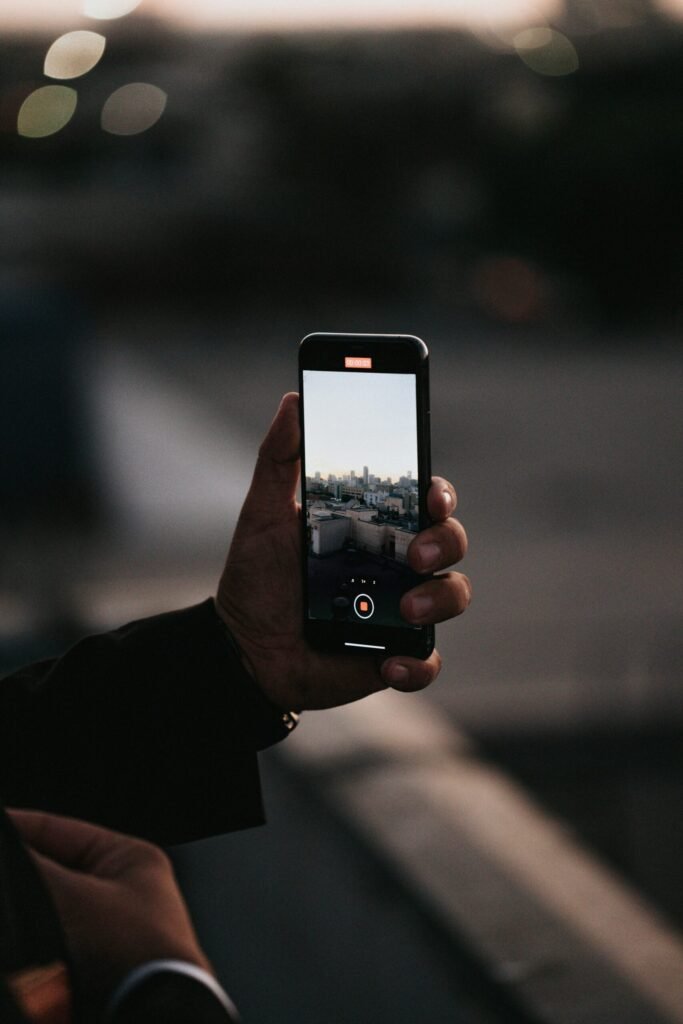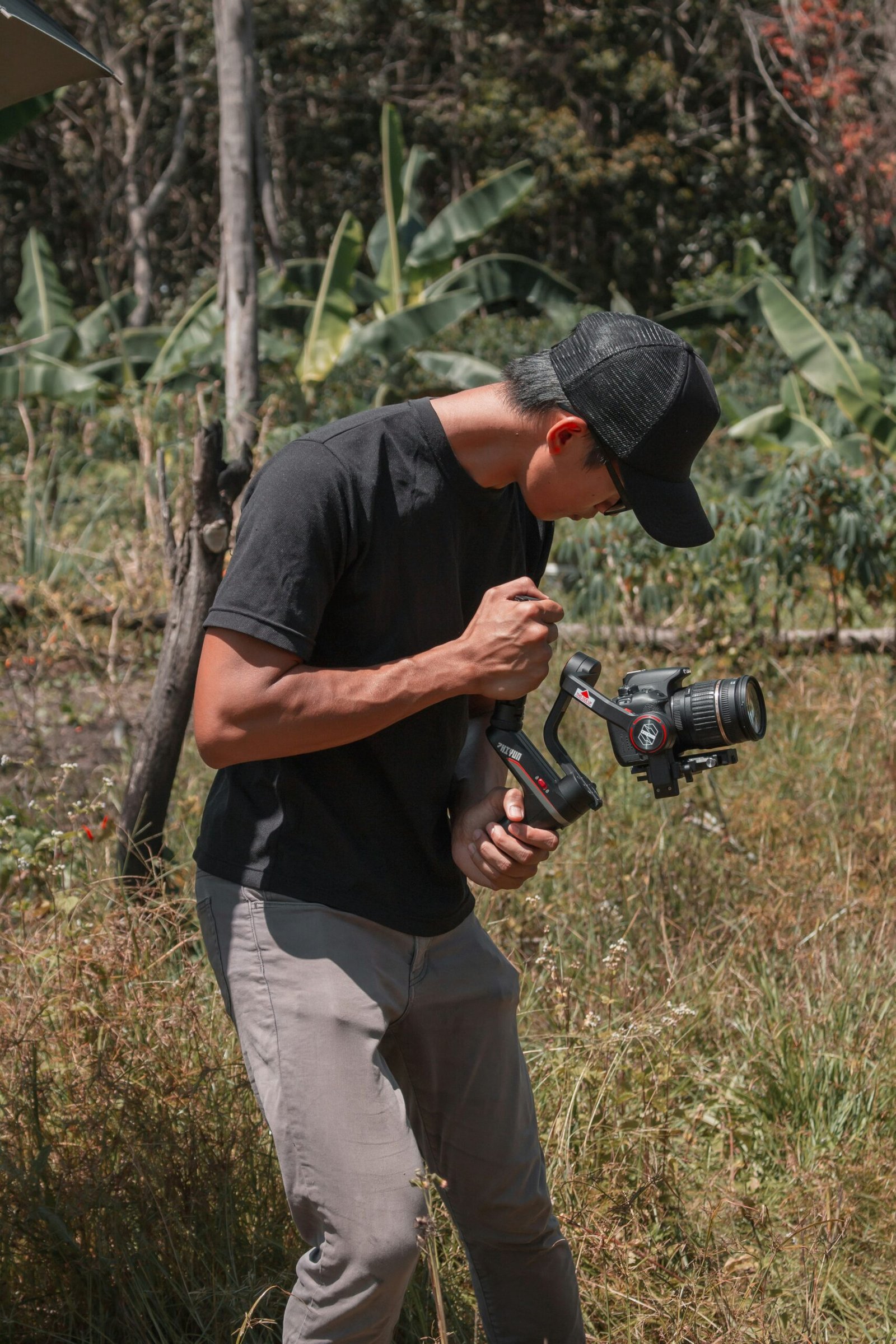
The evolution of mobile photography is a fascinating journey from rudimentary camera phones to highly advanced smartphone cameras we use today. When the first camera phones appeared around the early 2000s, their primary function was to offer convenience rather than quality. These early devices featured low-resolution sensors and limited functionality, suitable only for casual snapshots. However, the rapid pace of technological innovation quickly transformed the landscape of mobile photography.
A significant milestone emerged with the introduction of the Apple iPhone in 2007, which effectively combined the functionalities of a mobile phone and a digital camera. This pivotal moment set the stage for future advancements as manufacturers began to prioritize camera quality. Only a few years later, smartphones equipped with higher megapixel counts, improved sensors, and better software algorithms started dominating the market.
By the early 2010s, smartphone companies raced to innovate further, adding features like optical image stabilization, dual-lens systems, and advanced autofocus mechanisms. These improvements vastly enhanced image clarity and reduced blurring, even in low light conditions. Technologies such as High Dynamic Range (HDR) and 4K video recording soon became standard, setting new benchmarks for photo and video quality. The Google Pixel series, for instance, gained notoriety for its exceptional software-based photo enhancements, proving that computational photography could dramatically elevate mobile photography standards.
Simultaneously, the proliferation of social media platforms fueled the rise of mobile photography by providing immediate outlets for sharing images. Applications like Instagram and Snapchat made it easier for users to edit and distribute their photos, broadening the appeal of mobile photography to a global audience. This democratization of photography has not only empowered amateur photographers but also captured the attention of professionals, who now frequently use smartphones as supplementary creative tools.
Thus, the evolution of mobile photography is a testament to how far technology has come, transforming smartphones into powerful, creative instruments capable of producing high-quality images. This transformation has paved the way for a new era where virtually anyone can experiment with and master the art of photography.
High-Resolution Smartphone Camera
The evolution of smartphone cameras has been remarkable, driven by continuous technological advancements that have significantly improved both their functionality and quality. One of the most notable improvements is the increased megapixel count. Higher megapixel counts allow for greater image resolution, enabling photographers to capture finer details and produce larger prints without sacrificing quality. Where earlier models boasted single-digit megapixels, current smartphones often feature 48MP, 64MP, or even 108MP sensors, elevating the potential for high-definition photography.
Another significant advancement is the introduction of multiple-lens systems. Modern smartphones often incorporate wide-angle, ultra-wide, telephoto, and macro lenses, providing a versatile toolkit for photographers. The wide-angle lens is excellent for capturing expansive landscapes, while the telephoto lens brings distant subjects into clearer focus. Macro lenses allow for detailed close-ups of small objects, and the inclusion of multiple lenses paves the way for enhanced creative expression and technical precision.
Optical Image Stabilization (OIS) is a game-changer, particularly for low-light photography and video recording. OIS reduces the blurring caused by hand movements, ensuring sharp and clear images even in challenging conditions. By physically adjusting the camera lens based on gyroscope data, this technology compensates for motion, minimizing the impact of shaky hands and producing steadier shots.
Computational photography represents another transformative leap. Utilizing machine learning algorithms and advanced software, computational photography processes multiple frames to optimize image quality. This technology enables features like portrait mode, night mode, and HDR (High Dynamic Range), which effectively balance exposure and enhance details in both bright and dark areas of a photo. By blending hardware capabilities with sophisticated software, smartphones can now deliver professional-grade images that were once only achievable with dedicated cameras.
In conclusion, the combined effect of increased megapixel counts, multiple lens systems, optical image stabilization, and computational photography has redefined what smartphone cameras can achieve. These technological advances have democratized photography, making high-quality image capture accessible to a broader audience, and fueling the rise of mobile photography as a significant creative outlet.
The Rise of Mobile Photography as a Legitimate Art Form
In recent years, mobile photography has transformed significantly, earning recognition as a legitimate art form. This metamorphosis is evident as numerous renowned photographers have adopted smartphones as their primary tools for capturing compelling images. Artists like Chase Jarvis and Kevin Russ, among others, have demonstrated that the creative potential of smartphone cameras can rival that of traditional professional equipment. Their work is not only celebrated in digital realms but also featured in prestigious exhibitions and competitions worldwide.
The acceptance of mobile photography in professional circles is attributed to several key factors. Primarily, the convenience and accessibility that smartphones provide have democratized the field of photography. Unlike conventional cameras, smartphones offer an all-in-one solution that is always at hand, making the act of taking photos more spontaneous and less inhibited by logistical constraints. This accessibility has empowered a broader spectrum of individuals to engage in artistic photography, thus diversifying the perspectives and stories told through this medium.
Moreover, technological advancements in smartphone cameras have elevated the quality of mobile photography. Features such as high-resolution sensors, sophisticated image stabilization, and advanced software enhancements have narrowed the gap between mobile and traditional photography. These innovations have equipped photographers with tools that enable them to experiment and express their creativity with unprecedented ease.
Exhibitions and competitions have also adapted to these changes, with many now specifically dedicated to mobile photography. Platforms like the Mobile Photography Awards and Mobile Photo Festival celebrate and showcase the works of those who primarily use smartphones, further legitimizing this form of art. As these avenues continue to expand, they provide photographers with opportunities to gain recognition and inspire others within the creative community.
Ultimately, the rise of mobile photography as a bona fide art form underscores the evolving nature of creative expression. It highlights how technology can democratize and enhance artistic endeavors, ensuring that the ability to create beautiful, impactful images is within reach for anyone armed with a smartphone and a vision.
The Convenience and Portability of Smartphones
In today’s fast-paced world, the convenience and portability of smartphones have revolutionized the field of photography. Unlike traditional cameras, which often require bulky equipment and accessories, smartphones offer a compact and lightweight alternative. Photographers no longer need to lug around heavy gear; instead, they have a high-quality camera right in their pockets. This ease of use has democratized photography, making it accessible to virtually anyone with a smartphone.
The sheer portability of smartphones means that people always have a camera at their fingertips, ready to capture life’s unpredictable moments. This constant availability facilitates a level of spontaneity that is hard to achieve with traditional cameras. Whether it is a breathtaking sunset, a candid moment with friends, or a fleeting street scene, these moments can be seized and immortalized almost instantly. This spontaneous capturing fosters creativity, allowing photographers to experiment with angles, lighting, and composition on the go.
Moreover, smartphones come equipped with increasingly advanced camera technologies. Features like HDR, portrait modes, and various filters enable users to produce professional-level photographs without additional equipment. This not only enhances the quality of the images but also broadens the creative horizon for individuals using these devices. Additionally, the integration of social media apps allows photographers to share their work instantaneously, receiving immediate feedback and engagement from a global audience.
The ease of having a versatile camera readily available at all times marks a significant shift from the planning and preparation traditionally associated with photography. While high-end cameras are still indispensable for certain applications, the rise of mobile photography underlines a new era where convenience and portability can meet, and often exceed, the quality and creativity people have come to expect from conventional photographic equipment. As technology continues to evolve, the boundaries of what can be achieved with mobile photography will undoubtedly expand further, solidifying the smartphone’s role as a powerful creative tool.
Creative Potential: Editing Apps, Filters, and Effects
The evolution of mobile photography has seen a parallel advancement in editing apps, filters, and effects, transforming smartphones into potent creative tools. With an ever-growing array of applications available, photographers and enthusiasts are able to refine their images directly on their devices with professional-quality results.
Leading the way in mobile photo editing apps is Adobe Lightroom. This app offers a comprehensive suite of tools for both basic and advanced editing. With features such as exposure adjustments, color grading, and sophisticated presets, Lightroom enables users to enhance their photos with precision. The app’s non-destructive editing ensures that the original image remains intact, allowing for multiple versions and creative experimentation.
Another popular application is Snapseed, developed by Google. Snapseed combines a user-friendly interface with powerful functionalities, such as the “Selective Adjust” tool, which allows users to edit specific parts of an image while leaving the rest untouched. Its plethora of filters and effects, including the HDR Scape and Glamour Glow, can significantly elevate the aesthetic of photographs.
VSCO is another noteworthy app, particularly favored for its extensive library of filters known for their film-like quality. The app’s editing tools are equally impressive, featuring options for exposure, contrast, and clarity adjustments. VSCO also offers a vibrant community where users can share their creations and draw inspiration from others.
For users looking to delve into creative effects, Prisma stands out with its unique filter effects that transform photos into artwork. Using AI technology, Prisma renders images in the style of famous artists like Van Gogh or Picasso, providing an artistic twist to everyday photos.
To achieve professional results, users should leverage the strengths of these apps by combining basic adjustments with creative filters. It’s beneficial to start with exposure and color corrections before applying filters, ensuring that the foundation of the image is strong. Additionally, experimenting with selective edits and layer-based adjustments can add depth and dimension to photos.
The diversity and capabilities of mobile editing apps have revolutionized mobile photography, allowing users to unleash their creative potential fully. By harnessing the power of these tools, anyone can transform a simple snapshot into a compelling visual statement.
Impact of Social Media on Mobile Photography
The digital landscape has undergone a significant transformation with the advent of social media platforms, particularly Instagram, in the rise of mobile photography. As visual-centric platforms, these social media channels have created an unprecedented space for both amateur and professional photographers who utilize smartphones as their primary tool. The ease of access and the immediate gratification from sharing visually appealing content have revolutionized the way photography is consumed and appreciated.
Instagram, with its focus on visual storytelling, has been pivotal in this movement. The platform has democratized photography, allowing anyone with a mobile phone to capture and share high-quality images. This accessibility has led to a surge in creative expression, making visually stunning content a norm. Mobile photographers can effortlessly showcase their portfolio to a global audience, bypassing traditional gatekeepers of the art world.
Social media’s influence extends beyond just sharing images; it has become a crucial hub for inspiration and community building. Mobile photographers frequently draw inspiration from the diverse and ever-changing content on these platforms. Hashtags, challenges, and trends encourage photographers to experiment with different styles and techniques. Additionally, the ability to interact with fellow photographers through comments, likes, and direct messages fosters a sense of community and collaboration.
Moreover, the analytics and feedback mechanisms embedded within these platforms provide photography enthusiasts with valuable insights into their audience’s preferences. As a result, photographers can refine their technique and style based on real-time audience engagement data, enhancing their creativity. This interaction not only builds a loyal following but also creates opportunities for growth and recognition in the competitive world of photography.
In essence, the fusion of mobile photography with social media platforms has ushered in a new era of visual artistry. By leveraging the reach and interactive nature of these platforms, mobile photographers continue to push the boundaries of creativity, making compelling visual content more accessible and engaging than ever before.
Resources for Learning Mobile Photography
As mobile photography continues to gain popularity, a wealth of resources has emerged to help enthusiasts hone their skills and explore new techniques. From online courses to detailed blog posts, there are numerous avenues for individuals looking to elevate their mobile photography prowess.
Online courses are a fantastic starting point for those keen on mastering the art of mobile photography. Platforms like Udemy, Coursera, and Skillshare offer courses dedicated exclusively to smartphone photography. These courses cover a range of topics, from fundamentals like composition and lighting to more advanced techniques, such as editing and post-processing using mobile apps. The structured format of these courses provides a comprehensive learning experience, making them suitable for both beginners and seasoned photographers looking to refine their craft.
In addition to formal courses, YouTube is a treasure trove of free tutorials and walkthroughs. Channels such as Peter McKinnon, iPhoneography School, and Moment are frequently updated with content that covers various aspects of mobile photography. These tutorials are particularly useful for visual learners as they provide step-by-step guidance and practical demonstrations. Following these YouTube channels can keep photographers abreast of the latest trends and tools, enabling them to continuously develop their skills.
Blogs are another valuable resource for mobile photographers. Websites like Digital Photography School, PetaPixel, and ShotKit regularly publish articles that delve into mobile photography tips, gear reviews, and creative techniques. These blogs offer a mix of in-depth guides and quick tips, making them an excellent resource for photographers at any level of expertise.
For those who prefer reading physical or digital books, titles such as “The Art of iPhone Photography” by Bob Weil and Nicki Fitz-Gerald, and “Smartphone Photography in a Snap” by Jess Foley provide extensive insights into the world of mobile photography. These books are authored by experienced photographers and offer detailed instructions and inspirational content to fuel one’s creative journey.
By exploring these resources, enthusiasts can deepen their understanding of mobile photography and continually improve their skills. Whether through structured courses, engaging video tutorials, insightful blog articles, or comprehensive books, there’s a wealth of knowledge readily accessible to anyone willing to learn.
Conclusion: The Future of Mobile Photography
Throughout this blog post, we’ve explored the transformative journey of mobile photography, from its modest beginnings to becoming a powerful medium for creative expression. The advanced features in modern smartphones, such as high-resolution sensors, sophisticated algorithms, and versatile lenses, have democratized photography, making it accessible to millions. Whether capturing spontaneous moments, engaging in artistic projects, or documenting daily life, mobile devices have reshaped the photographic landscape.
Looking ahead, the future of mobile photography appears incredibly promising. Ongoing advancements in artificial intelligence and machine learning are set to further enhance the capabilities of smartphone cameras. Features like smart scene recognition, real-time photo enhancements, and augmented reality filters will likely become more integrated and intuitive, allowing even novice photographers to capture professional-quality images with ease.
Moreover, the evolution of hardware will continue to push boundaries. Improvements in sensor technology, optical zoom capabilities, and stabilization features are anticipated to improve image clarity and detail significantly. Coupled with the rise of 5G technology, the ability to instantly share high-quality visual content will become even more seamless and ubiquitous, fostering a global community of photographers who can collaborate and share their work in real-time.
As mobile photography continues to evolve, it’s crucial for enthusiasts and professionals alike to embrace and experiment with these emerging technologies. By leveraging the latest tools, photographers can explore innovative ways to express their creativity and push the boundaries of their craft. The remarkable potential of smartphones as creative tools ensures that mobile photography will remain a dynamic and influential art form, inspiring individuals to view the world through a unique and imaginative lens.
Reference Links:
- Mobile Photography: How to Take Professional Photos with Your Phone – Creative Bloq’s guide to capturing professional-quality photos using a smartphone.
- The Best Mobile Photography Apps for 2024 – Digital Trends reviews the top photography apps that can enhance your mobile photography.
- A Beginner’s Guide to Mobile Photography – Photography Blog offers practical tips and techniques for those new to mobile photography.
Video Link:
- Video: Mobile Photography Tips for Better Smartphone Photos – A YouTube tutorial that provides essential tips for improving your mobile photography skills, covering everything from composition to lighting.
These resources will help photographers make the most of their smartphone cameras, turning everyday moments into stunning photographs.




